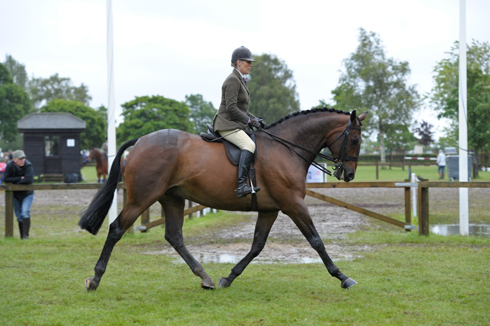The go-round marks introduced as an experiment in working hunter classes have been abandoned, which I gather most competitors will welcome.
The few shows where it was tried out proved that allocating 20 marks for the go-round gave it undue influence and undermined the value of a clear round. When you get to the end of a class, add up the marks you’ve awarded and realise you don’t have the winner you wanted, the system doesn’t work.
A lot of riders couldn’t understand why the idea was trialled in the first place, but there was logic behind it. Some horses jump well but become excited in company, which you wouldn’t want in the hunting field — the environment in which these horses should be envisaged.
In theory, it was a good idea. In practice, it didn’t work, so it’s been scrapped. Sometimes, the only way to find out is to try.
The issue was discussed and the decision taken at the recent Sport Horse Breeding of Great Britain [SHB(GB)] annual meeting.
Not surprisingly, the hats issue [those competing in hunter classes must wear an approved hat with three-point harness] was still a hot topic.
Although the society’s chairman Jennie Loriston-Clarke said the council had been disturbed by some factions with negative attitude, she also made a point of saying that “the way is always forward”.
She reminded those attending that they voted for council members to represent them, which is sometimes forgotten.
Council — is it for you?
Does the system where those seeking election can be nominated by society members, but must be seconded by a council member make it more difficult to bring in new ideas, as was suggested at the meeting?
This issue will be looked at, but everyone looking to sit on the council or board of any society should remember the time, experience and dedication needed.
We do, of course, need new people coming through, just as we do on all societies’ judging panels. It will be interesting to see how many people stand when council seats are next available and on what criteria they put themselves forward.
I’m also pleased that, although it means having two annual meetings in one year, the 2014 one will be held at the end of the season. If you want to raise an issue, please go.
This is the place to get it discussed, as it will be held before the rules committee meeting.
Please don’t go!
Talking of rules, what happened to the unspoken one that a class should never be dismissed or allowed to leave the ring until placings have been awarded and winners have led off on their lap of honour?
This applies to championships, too, but recently I’ve seen well-behaved horses fidgeting because unplaced riders have left before presentations are completed.
Nothing’s over until the rosettes are on and it’s upsetting to see a good horse unsettled or, even worse, demoted. Riders, judges and stewards all have a responsibility to make sure this doesn’t happen.
There have also been incidents where ride judges have smacked horses in the ring, which is totally unacceptable. I’m not talking about touching your cane down the shoulder of a wobbly novice to help with your steering, but about giving a horse an audible slap down the shoulder.
If a horse misbehaves, it should be brought back into line. There is also the safety issue, because you never know how a horse is going to react and the showring isn’t the place to find out!
I’ve heard riders grumble that a judge let a horse “get away with it”, but that’s missing the point. A show horse should carry the judge and, within the limits of his experience, give an effortless ride.
Even a novice should show willing. I’ll forgive a loss of balance or a four-year-old who is slightly overwhelmed, though inevitably, it might affect my final placings.
But if a supposedly established horse decides he doesn’t want to come out of line or has forgotten where he keeps his forward gears, it isn’t a judge’s job to find the answer.
This article was first published in the 22 May issue of Horse & Hound magazine
